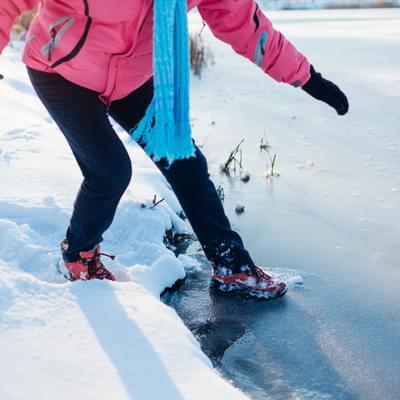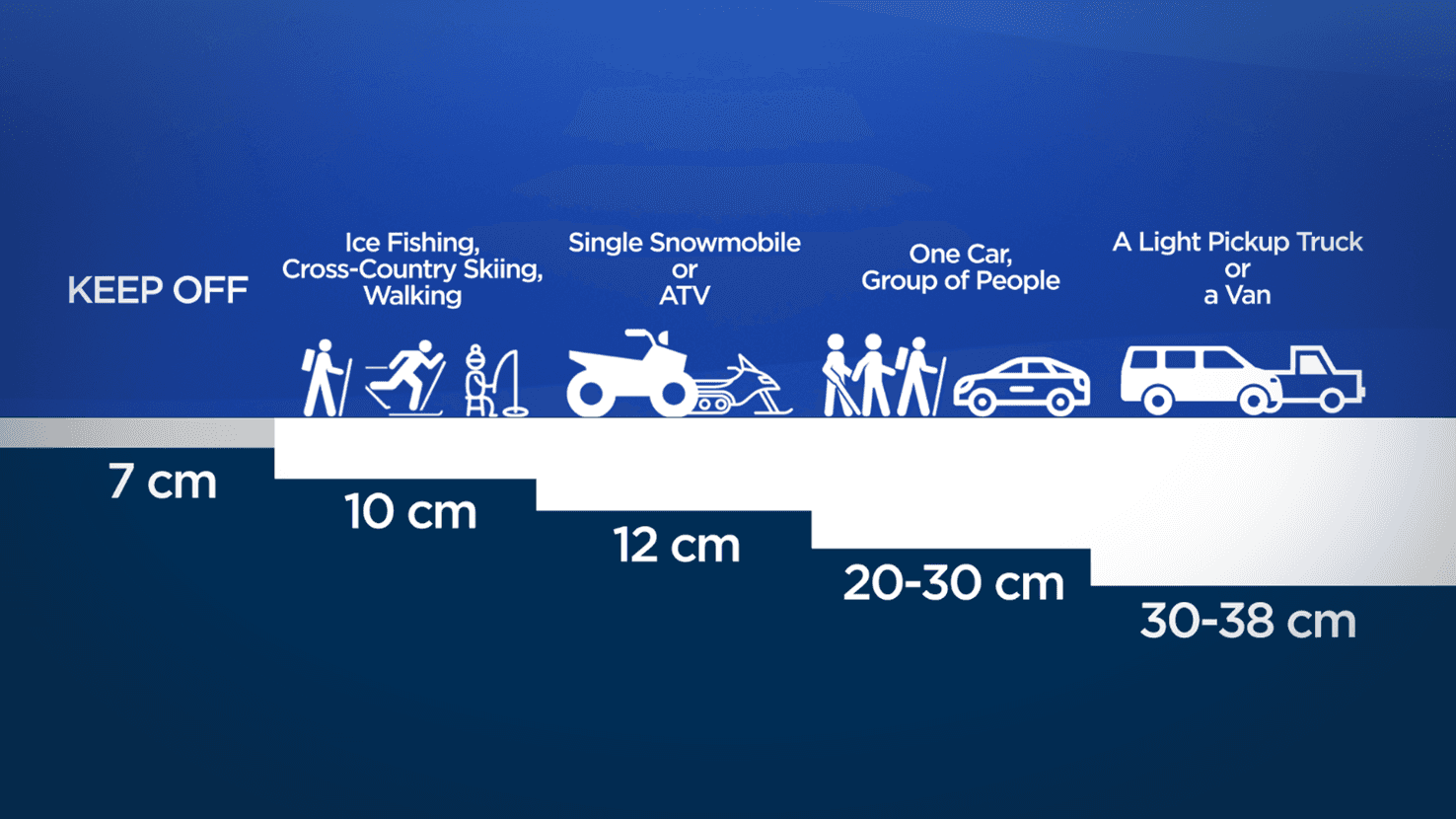
Ice Safety
When winter arrives, our community enjoys winter activities on the ice, such as hockey, ice fishing or ice skating. Before venturing out on the ice, take time to review the ice safety tips below.

Ice Safety Reminders: There is no such thing as 100% safe ice.
The winter season brings fun activities like hockey, ice skating, ice fishing and more. When temperatures fluctuate, venturing onto the ice on any body of water can be a fatal decision. Here are tips to ensure you stay safe around ice this winter:
- During unseasonable warm temperatures in the winter, remember that ice is melting and is not safe!
- Make sure kids are always under supervision and keep pets on a leash.
- Only skate on a still body of water, such as a lake, and on ice that is 20+ cm thick. The safest place to skate is on a still body of water, such as a lake.
- Avoid streams and flowing water, even if they look frozen.
- Clear blue to black ice is the strongest and likely the deepest. White opaque or snow ice should be avoided. Grey ice indicates the presence of water and is unsafe to stand on. However, colour is not always a reliable way to determine ice depth.
Ice Emergencies
If you fall in or witness an emergency, call for help and dial 9-1-1!
What if you fall in? Trying to climb out can break weak ice around you. Here are some tips to remember if this happens to you or someone you are with:
- Try to keep calm & look toward the shore
- Place your hands and arms on the unbroken surface of the ice
- Work forward on the ice by kicking your feet. This will help you keep horizontal and help you ’swim’ out of the hole
- If the ice breaks, maintain your position and slide forward again. Keep trying
- Once you are lying on the ice, roll away from the hole. Do not stand
- Crawl back toward your tracks. This spreads your weight out until you are on solid ice
- Follow your footsteps back to the shore
What if someone else falls in? Rescuing another person from ice can be dangerous. It’s best to wait for trained professionals to arrive or wait for help from other bystanders.
- Keep calm and call 9-1-1
- Do not run up to the hole! You may break through and fall in
- Use an item on shore to extend out to them to help pull them out of the hole. Like jumper cables,
- Get medical assistance
- Working together, try to extend a rope, pole or branch from shore.
- Only go on the ice if wearing a flotation device.

Text and photo courtesy of Insurance Bureau of Canada, Canadian Red Cross, Rescue Canada
Ice Factors
Many factors affect ice thickness, including the type of water, location, time of year and other environmental factors such as:
- Water depth and size of the body of water
- Currents, tides, and other moving water
- Chemicals including salt
- Fluctuations in water levels
- Logs, rocks, and docks absorb heat from the sun
- Changing air temperature
- Shock waves from vehicles travelling on the ice
- Avoid going out on the ice, especially at night
We're here to help, contact us!
Fire Services

Fire Hall 1010 5th St SE High River, Alberta

Monday to Friday 8:00am - 4:00pm

fire@highriver.ca

Fire Department: 403-652-3774
Contact the Fire Inspector - Stewart Corbett

fireinspections@highriver.ca
Report a Concern Follow us on Facebook
Follow us on Facebook

